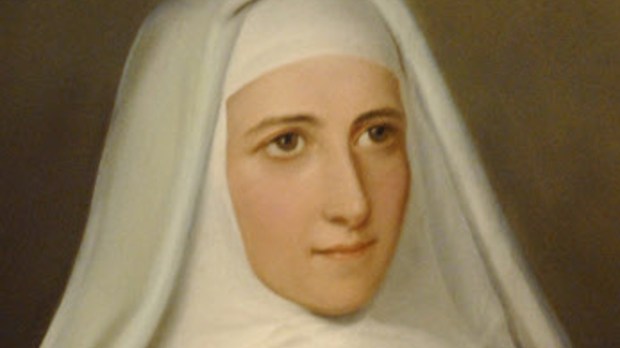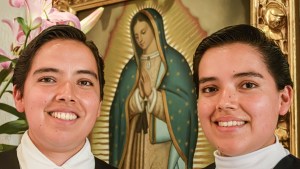From the beginning of Lent in 1832 to that of 1834, all social and worldly life ceased in France. This was due to cholera, an infectious disease that spread from India to London and then passed through Normandy from England by ferry to the French port of Dieppe.
A few days were enough for the disease to reach Paris. At the time, no one understood the mode of transmission, nor the fact that cholera patients died of massive dehydration; moreover, the doctors of the time had no medicines that would save them.
Consequently, people were dropping like flies by the thousands. At first, it was believed that the plague only affected the poor crammed into slums — and it’s true that they were the main victims, because of the crowded conditions and lack of access to clean water.
But very soon, to the great horror of “good” society, it was realized that money and noble birth were no protection. A panic took hold of the people, who were ready to abandon their parents, children, husbands, or wives who had been infected in order to be safe – or even to wall up their neighbor’s house if they suspected he was infected.
A mystical experience
Anne-Eugénie Milleret “de Brou” (we put the last part in quotes because her commoner father had extended his surname to include this more aristocratic name of his in-laws) had a cruel experience of this collective madness.
After the ruin of her father – a rich businessman from Metz – the liquidation of the family mansion and castle, and her parents’ separation, she followed her mother to Paris. It was there that Éléonore-Joséphine de Brou died of cholera, leaving her youngest daughter, who was born on August 26, 1817, and was just 15 years old.
Without news of her father or siblings, Eugénie was taken in by friends of her family who had settled in Châlons-sur-Marne. They treated her as their own daughter, trying to distract her from her misfortune by having her attend balls among flowers and perfumes, silk dresses, and the festive rhythm of polkas, waltzes, and mazurkas.
Eugenie played this game, but often in the midst of the hubbub intended to make her forget her past, she sometimes felt distraught and went off to sit on the sidelines, wondering what she was doing and if human existence – at least that of the privileged – was really limited to this nonsense. Deep down, she knew it was not.
Miss Milleret was a perfect product of her time. Born at the beginning of the Restoration, she grew up in a de-Christianized world where religious practice was often no more than a social convention, a series of rituals no one any longer believed. Her father was a follower of Voltaire who was quick to denigrate the Church, and as for her late mother, she considered religion to be a matter of convenience.
Under these conditions, it’s surprising that Eugénie was receptive to faith. Indeed, she was more than receptive, because on Christmas Eve 1829, during her first Holy Communion, she had a mystical experience that left a permanent mark on her. It is this memory which, during the balls, prevented her from abandoning herself to the artificial intoxication and inclined her to meditate on the mysteries of salvation: this, within the capacity of her young age and the limits of an extremely weak religious background; as she would confide one day to Fr. Lacordaire, “My ignorance of the teaching of the Church was inconceivable.”
Fr. Lacordaire’s preaching
The unexpected return of her father, who in 1836 came to get her and brought her back to Paris, didn’t help matters. In contact with this sneering agnostic, Eugénie felt the fragile edifice of beliefs, on which she had tried to rely in her trials, start to crumble.
Mr. Milleret didn’t forbid her to practice the faith, however. It was socially acceptable in the world he frequented, and it was easier to arrange an advantageous marriage if the girl passed for pious. So, Eugenie was free to go to church and attend the Lenten lectures that Fr. Lacordaire preached at Notre-Dame that year. Her father considered it a worldly activity like any other, but the Dominican’s preaching had an unexpected effect on the young girl. It removed all the doubts that had been undermining her faith and made the Gospel message shine for her, so much so that at Easter, Eugenie knew that she would enter religious life. Where? She didn’t know.
The months passed. She knew it would be more prudent to wait until she was of age and in possession of her share of the maternal inheritance before confessing her plans to her father. In the meantime, she frequented the most active Catholic circles. It is also there that she met, in 1837, Fr. Théodore Combalot, a priest who was working on a great educational project for which he needed a woman’s help.
What was it about?
The foundation of a teaching institute, placed under the patronage of Our Lady of the Assumption, which would be dedicated to educating young girls from good society in order to make them exemplary Catholics, capable of raising generations of Christian families and thus rebuilding a Christian France.
A work of Christian education
Fr. Combalot wanted his institute to offer a high enough level of secular studies so as to attract girls from a de-Christianized “high” society, so that – under the guise of high quality education – these teenagers would receive an equally high level of Christian training, which would then benefit not only them but also their surroundings. The project can be summarized in this formula: formation of the whole person in the light of Christ.
When the priest explained his project to her, Eugenie was initially hesitant because she feared Combalot’s willingness to engage in public controversies and his association with some figures that were likely to attract the distrust of the Catholic hierarchy. Nonetheless, the project was born on April 30, 1839. It was only after her meeting with Fr. d’Alzon, the future founder of the Fathers of the Assumption, and then the rupture of the nascent congregation with Fr. Combalot in 1841, that Eugénie definitively recognized in this work the will of God for her.
A time of trials
Before the international expansion and success of the Sisters of the Assumption in the 1860s, the foundress experienced many difficulties and opposition. When she finally had greater success, it brought with it a time of great fatigue due to endless international journeys, which took her to New Caledonia, to the Philippines, and to Latin America, as well as across Europe. She would outlive all those she loved: first Fr. d’Alzon, then her assistant and friend, Kate O’Neill, known as Sister Thérèse-Emmanuel. She accepted these trials in a spirit of self-denial. In 1894, she resigned her position as Superior General and died on March 10, 1898, as a result of a stroke which, the previous year, had left her mute and paralyzed.
Is it any wonder that the miracle that led to her canonization in 2007 was the healing (upon her tombstone) of a blind and deaf child, deprived of her intellectual faculties, who today is pursuing her university studies?



